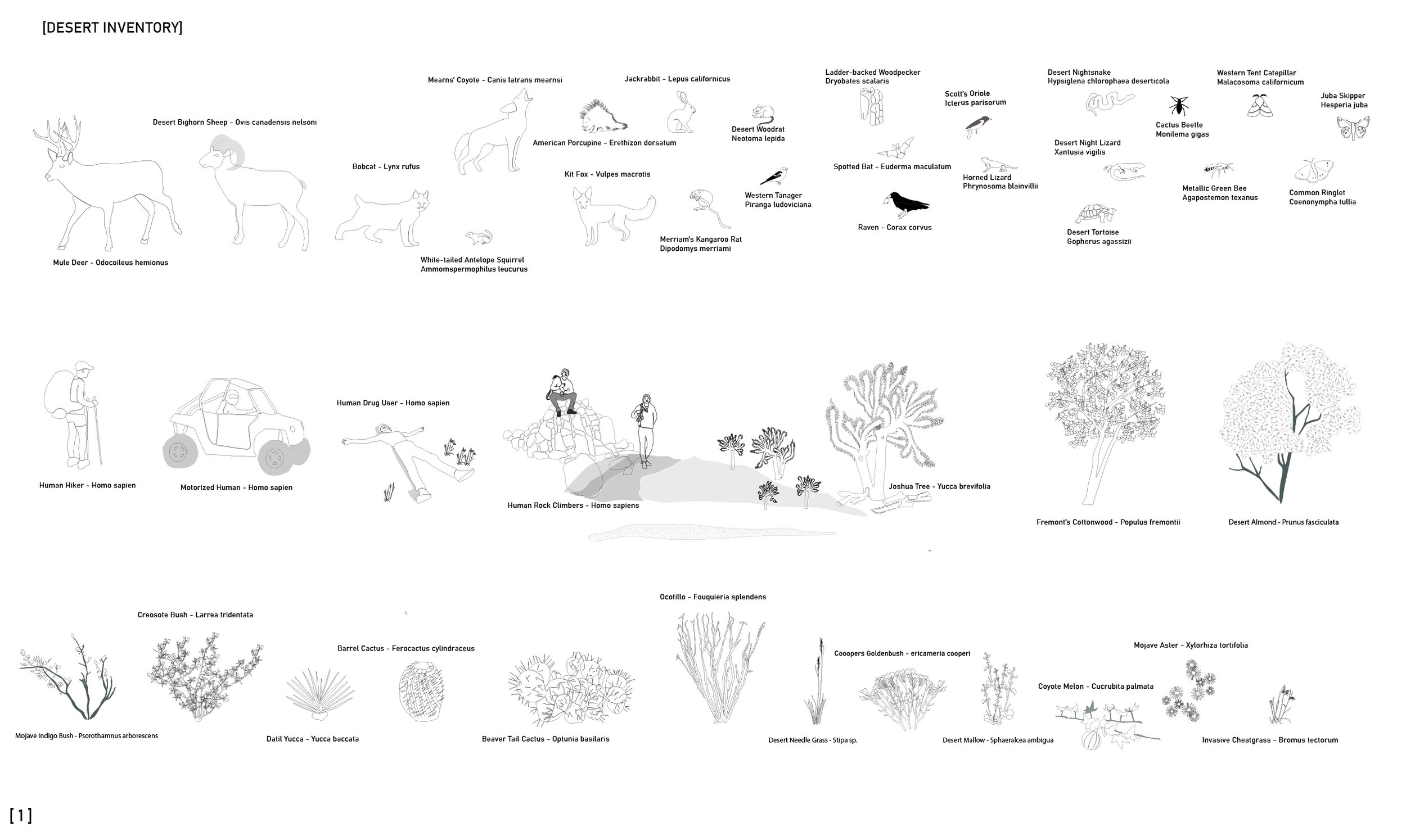
Eidectic Vocabularies
This study of Joshua Tree National Park sought to engage environmental issues, social interactions, and large- scale management questions in order to determine how and if the goals of national parks are still feasible.
I started with surveying species interactions, including park attempts to offset the human onslaught of environmental interference, namely with a technological triage in the form of lasers shooting at ravens, in order to save the desert tortoise offspring. The survey also included the reactions of flora to human settlement and human visitation to the park, mostly focusing on the shifting edges that the Joshua Trees must navigate as increases in pollution, temperature, fire danger, and human activity push them further out of the park’s boundaries.
My interventions intended to complement existing conservation efforts and test new ones through a series of carefully chosen re-habitation grids. The interventions were meant to initiate low-tech ways to increase habitat viability for the park’s creatures and included closing portions of the park to humans. The project did not answer whether it’s worth it, or possible to save the Joshua Tree but instead attempted to play with the idea that human interaction with the park is not the most important thing to preserve. The project attempted to slow down time by isolating the eastern half of the park and limiting the movement of the hardest to predict creatures (homo sapiens) in order to put into motion processes that might allow the desert to reestablish at its own pace.




